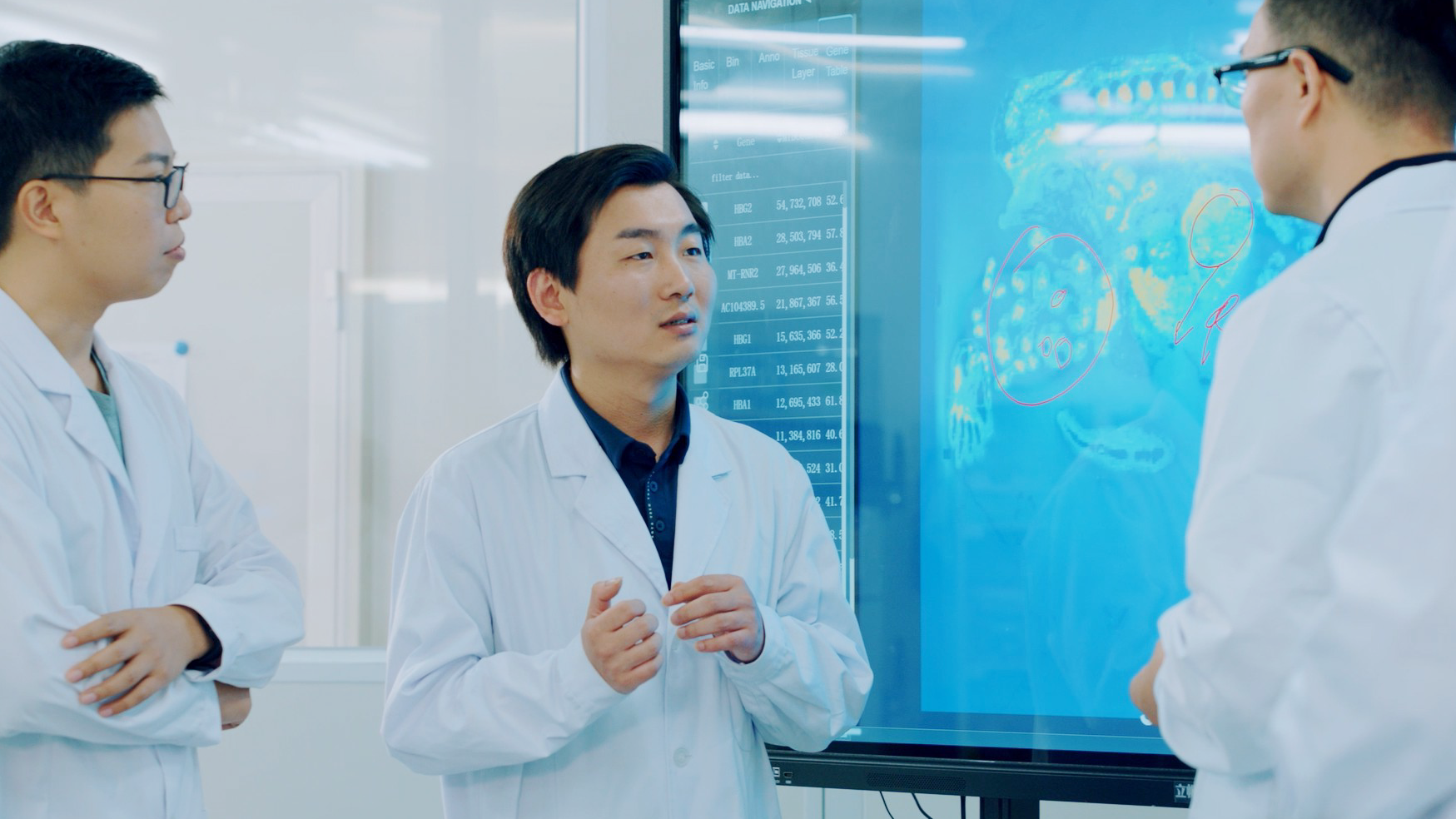About 350 years ago, man first observed the basic function unit of life, the cell, through a microscope. However, at that time it was only possible to observe the structure of the cells.
Today, with BGI-Research’s Stereo-seq technology, the latest in spatial multiomics technology, we can see what types of cell constitute an organ, where each cells is located, and what the spatial relationship is between different cells and how that changes over time.
 Dr. Liu Longqi, Chief Scientist of Single-Cell Omics, Director of the Cell Science Research Institute, BGI-Research
Dr. Liu Longqi, Chief Scientist of Single-Cell Omics, Director of the Cell Science Research Institute, BGI-Research
While the microscope revealed for the first time cellular structures, Stereo-seq can detect over 25,000 genes simultaneously, and will enable scientists to accurately classify diseases and explore disease subtypes, so that human diseases can be redefined through molecular and cellular information.
This 350-year trajectory accelerated dramatically in the past 45 years with the development of sequencing, its application during the Human Genome Project and subsequent application to other cellular structures, and advances in sequencing technology that dramatically reduced the cost of genome sequencing.
The technology was transformed again by single cell multi-omics, Nature Method’s technology of the year for 2019, and spatial transcriptomics, the technology of the year for 2020.
Single cell omics technology enables scientists to analyze cell types at a single cell level after breaking up the tissue. BGI-Research, together with other institutions published two significant single cell studies in Nature in 2022.
In the first, human totipotent stem cells were induced and cultured in a state similar to a fertilized egg for three days through somatic cell induction. These were the youngest human cells obtained in vitro.
In the other study, BGI-Research and collaborating institutions obtained the world’s first non-human primate whole body organ cell map after single cell sequencing about 1.14 million cells from 45 tissues or organs of rhesus monkeys. This map can be used in studies related to species evolution, human diseases, and drug evaluation and screening.
While a tremendous advancement in its own right, single cell omics does not allow capture of cell location since the tissue is broken up. However, Spatial transcriptomics technology does do this. Initially, only a single or a few genes could be located in situ. Multicolor fluorescent labeling technology enabled the detection of hundreds or even thousands of genes, but not on a genome-wide basis.
Stereo-seq technology, independently developed by BGI-Research, has solved this problem, enabling 25,000 genes to be detected simultaneously as well as determining the type and location of cells relative to one another to be able to see how they change and interact with each other over time. This can help scientists to understand cellular microenvironments, organ formation, and better understand human diseases and aging.
BGI-Research, working with other scientists, have used Stereo-seq to construct a spatial transcriptome map of mouse embryonic development from days 9.5 to 16.5 which was published in Cell. Each embryo slice had 320,000 cells and the map shows the different positions of different cell types in the embryo and the different characteristics that may exist or different levels of maturity. In addition, the teams constructed a zebrafish embryonic development map, a comprehensive high-resolution 3D reconstruction of the Drosophila embryo and made a spatial transcriptome map for Arabidopsis leaves.
Most recently, Stereo-seq has been used to complete a spatiotemporal map of the axolotl salamander brain regeneration which featured on the cover of Science. Through the research, BGI-led team identified the key neural stem cell subsets in the process of axolotl brain regeneration. The study of the initiation mechanism of salamander brain regeneration and the discovery of key genes may provide important guidance for the repair of human nervous system damage or degenerative diseases such as Parkinson’s and Alzheimer’s.
Stereo-seq technology has attracted the attention of scientists from around the globe and around 170 of them from 30 countries have come together to form the SpatioTemporal Omics Consortium (STOC) to focus on the wide application of spatiotemporal omics in various fields of life sciences
With the further advancement of technology, spatiotemporal omics has the potential to directly capture the gut microbiome in the future, helping mankind to solve problems such as the composition and distribution of the gut microbiome and the relationship between gut microbes and the host.
While mankind knows a lot more about the world around us than we did just five years ago, let alone 350 years, Stereo-seq has ushered in the latest round of technology revolution after microscopy and gene sequencing technology.
On the basis of high-precision spatiotemporal maps, life will become clearer than ever before, which will greatly accelerate mankind’s understanding of organ structure, development and aging, disease and health, and life evolution.



